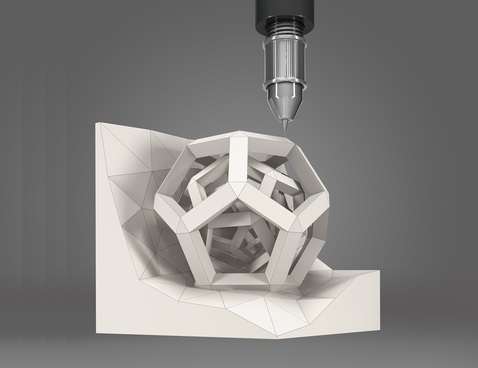3D Printing – The ‘Logical Technology’ Set To Change The World

Health and manufacturing industries will push boundaries of printing innovation, Gartner analyst tells TechWeekEurope
3D printing has grown rapidly in the last few years to become one of the most exciting and innovative sectors of the technology industry, offering the rare combination of unparalleled opportunity and personal creativity.
But how big can the field become? TechWeekEurope sat down with Pete Basiliere, research vice president of imaging and print services at Gartner, to find out more.
Getting personal
 Many of the recent headlines surrounding 3D printing have sounded either like something out of science fiction (see L’Oreal’s declaration to start the printing of human skin tissue) or just a gimmick (like Hershey’s ‘build your own’ chocolate printer), but the technology is making a genuinely important impact in several areas, Basiliere (pictured left) notes.
Many of the recent headlines surrounding 3D printing have sounded either like something out of science fiction (see L’Oreal’s declaration to start the printing of human skin tissue) or just a gimmick (like Hershey’s ‘build your own’ chocolate printer), but the technology is making a genuinely important impact in several areas, Basiliere (pictured left) notes.
Healthcare could be one of the main sectors to benefit from an expansion in 3D printing technology, as this allows the creation of more personalised items, such as implants, prostheses or braces, than ever before.
“Medical devices are the most exciting part of 3D printing,” says Basiliere, who is in a good place to comment on such issues, as he wears 3D-printed hearing aids.
“They are personal…it’s life-altering”.
The technology also helps reduce wastage in the manufacturing process, as implants are built up by computer-generated designs that offer more personalisation and stability – one example he shows of a hip implant actually allows the bone to into the material over time.
It won’t be long before a surgeon can take data from an MRI scan or other testing and tweak implants to benefit individual patients, Basiliere believes. His hearing aids are custom-printed to his ears to allow for maximum effect, and he also mentions Invasalign braces as another area that takes personal prints to create a truly unique, tailored product.
The logical way
 Manufacturing and engineering are other verticals that will benefit hugely from a boost in 3D printing, Basiliere says, as both the production of individual parts and even the plants themselves become more widespread.
Manufacturing and engineering are other verticals that will benefit hugely from a boost in 3D printing, Basiliere says, as both the production of individual parts and even the plants themselves become more widespread.
“For anybody that’s involved with a physical good, whether it’s automobiles, footwear, or consumer items, (3D printing) is the logical technology,” he says.
The ability to create prototypes quickly and easily means the potential is boundless, as companies can create multiple editions of products to test out certain sets of configuration and measurements to see what works best.
But asides from just printing components, Basiliere believes that the next major growth area in 3D printing is creating the machines themselves.
The ability to print tools, and change production line machinery quickly in order to adapt how products are made can benefit everyone in the business, from engineering all the way up to marketing.
Basiliere mentions Airbus and the European Space Agency as notable companies that are looking to 3D printing to reduce costs and create parts that are stronger and more durable.
The technology is fairly unique in that it is the hardware leading the way in terms of development, not software, as manufacturers look to drive down the costs of producing new, more compact printers that will appeal to a wider market.
Even traditional printer manufacturers could be getting in on the game soon, Basiliere says, predicting that several major 2D printing manufacturers will move into the 3D printing market within the next 12 months, largely due to the fact as the inkjet technology currently used in many home and office printers is remarkably similar to that jetting technology seen in many 3D printers.
“This is something you need to watch – you can literally use the same technology to not only jet inks on a party invitation, but you could also use it to print skin tissue.”
Exciting
 But it is in education where 3D printers could have perhaps its largest impact, Basiliere believes, and not just in helping students learn, but inspiring them to go on and help develop the technology.
But it is in education where 3D printers could have perhaps its largest impact, Basiliere believes, and not just in helping students learn, but inspiring them to go on and help develop the technology.
“What’s exciting is that schools in the UK and around the world are starting to put in 3D printers,” he says.
This obviously helps benefits those seeking a career in engineering or manufacturing, having given them a prior education in the technology which they can then take forward without being constrained by ‘traditional’ methods of design.
This could even lead to a seismic change in how the workforce grows and develops, Basiliere says, with a new generation of workers bringing new ways of thinking in terms of design and manufacturing.
And looking forward, the next few years will prove crucial to the development of 3D printing as a whole, he says, as the hardware, software and design processes all evolve to make a better quality product.
“The foundation is there, the research is being done, the adoption is growing,” he says. “Consumers often don’t get 3D printing – until they see it!”